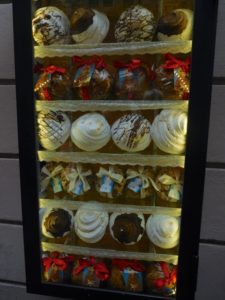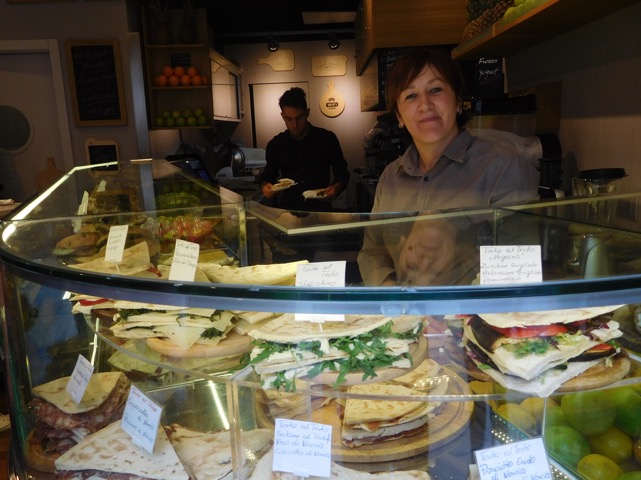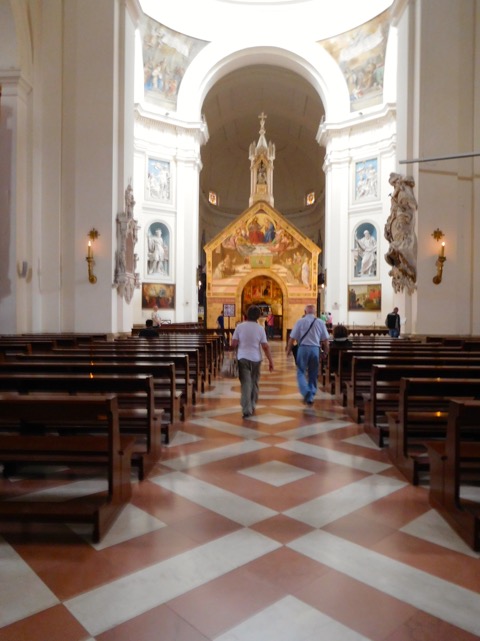Back in the day as an art historian, I spent two summers in mid-80ties hopping on trains with a pass and visiting all the European cities I could at the heart of Christian art history. A chance to wander through basilicas was usually a thrill of discovery that enriched the mind, and actually stirred up my own interest in finding a full-time life in the church serving God.The symbolism, the traditions, the stories whether interpreted by Paolo Veronese (Wedding at Cana which is enormous), or Leonardo da Vinci (his Mona Lisa was shocking small), or the steadiness of Byzantine Icons, or the drama in Masaccio’s Expulsion From the Garden of Eden and how politics from the start determined whether the commissioners got a holy seat in heaven, or not. It took a while. But one of the most inspired artists who spoke to my likes over dislikes was Giotto. I was overwhelmed when I visited the small but glorious chapel in Padua holding so much of his work. particularly Judas’ Betrayal of Jesus. Giotto, you must understand, was considered the first Renaissance artist. He didn’t do things like anyone else and his frescoes were relevant and engaging.
What initially drew me to Assisi had been the Basilica of St. Francis filled with brilliant but now fading Giotto frescoes concerning the life of St. Francis. The saint wasn’t just about having birds fly into his hands or sit on his shoulder, or saving lambs, writing poems that became popular at weddings, like the Canticle of Brother Son, Sister Moon. He was marked by his shaved scalp with a roll of hair left to circle the bald area, a sign of the monks, and his total humility. He is followed by many and visiting Assisi brings us to a world that is integral with castles and hill climbs, and faith. And ironically, I received my weekly meditation from Richard Rohr about letting go, and it was themed around St. Francis of Assisi. Rohr wrote: “Both Francis and Clare lost and let go of all fear of suffering; all need for power, prestige, and possessions; any need for their small self to be important; and they came out the other side knowing something essential – who they really were in God and thus who they really were.” What a blessing this is.
For a long time I could not remember why I went to Assisi in ’83. It was before the earthquake. I remember it seemed so rural. But I wasn’t there just to boot-step through the life of St. Francis, a believable friar who did it his way. He rejected his father’s wealth garnered while being a merchant of French fabrics, rebelling when necessary (his father incarcerated him when he sold all of the fabrics and a horse to pay for repairing a church), yet establishing the Franciscan monks which still exist today. This trip to Assisi, I felt strangely like I was visiting California – there is San Francisco, named after St. Francis, there is the Basilica of Santa Maria de Los Angeles, and there is the Basilica of Santa Clara, who was so important in St. Francis’ life, his first female follower who died in 1253. In her Basilica hangs the Crucifix that literally spoke to St. Francis, telling him to rebuild his house, which he did, but more generously, he built three churches. The Jesus figure on the crucifix was strange for the end of the Byzantine period, with his eyes opened rather than closed and a straight rather than twisted body, and the three figures around him in the cross artwork are Francis, St. Clare with a halo, and nun of the Benedictine order. Yet, he was a tormented man, who went to extremes, was blind in his final years, the last two of his life suffering the stigmata, the five wounds of Jesus.
St. Francis was not a fancy priest. On the contrary, he wore the most basic of tunics and sandals. Giotto’s paintings touch the high points of his life, including when Francis met a nobleman, destitute and poorly dressed, and immediately took off his cloak to give to the man; the mission of Francis to rebuild the church; his prayers before the image of the Crucified Savior, when a voice spoke to him and said, “Go and repair my house which is falling into ruin,” and when he sold the fabrics and horse of his father to do so. But his social conversion was when he gave everything back to his father, even the clothes he had on, and renounced his inheritance. He became the “shoulders” of Pope Innocent III through a dream, he birthed the Franciscan movement which Pope Innocent III approved giving them the right to preach the divine word. Francis was filled with the spirit of Elijah as he prayed in a hovel in Assisi, and he replaced Lucifer in heaven as light to the world. (that’s what the painting designates. I don’t quite understand.) Francis was considered a social peacemaker, and converted the Sultan of Egypt to walk through fire with him. He is credited as having quenched the thirst of the people of God, saved a lamb and dialogued with the birds. He had a passion to convert the rich and always was an inspired teacher of the church. He had a Christ like transformation while praying on the slope of Mount La Verna, he saw him in the form of a crucified Seraph which imprinted in his hands and feet and right side the sacred stigmata, He is accredited to having freed people from physical evil and moral evil and most of all he loved prisoners, and for that I identify with him. He liberated them when he could. It’s not hard to see his point.
 The Basilica of St Francis is located on “the hill of hell”, which was once a burial ground for criminals, the mentally ill, outcasts, the “social junk”, and especially enemies of the cities, until Pope Gregory IX renamed it “Hill of Paradise”.It the wish of St. Francis that his body rest among the outcasts and criminals in imitation of Christ who died between two thieves and was buried outside of Jerusalem. Asked where he wanted to be buried, he answered ” Where the gallows of wrong-doers are.” But his stone sarcophagus, carrying his remains, is the pilgrim’s destination today. Even Pope Francis visited Assisi early on in his ministry as a Pope. Pope Pius VII authorized the opening of the tomb so his remains could be examined and they were placed in a bronze urn, gilded on the inside, the removed again in 1978 by Pope Paul Vi, and this time put in a glass box placed within the iron urn. The passion and care of relics is part of a saint’s destiny, so people come to be in the presence of these pieces of someone holy,
The Basilica of St Francis is located on “the hill of hell”, which was once a burial ground for criminals, the mentally ill, outcasts, the “social junk”, and especially enemies of the cities, until Pope Gregory IX renamed it “Hill of Paradise”.It the wish of St. Francis that his body rest among the outcasts and criminals in imitation of Christ who died between two thieves and was buried outside of Jerusalem. Asked where he wanted to be buried, he answered ” Where the gallows of wrong-doers are.” But his stone sarcophagus, carrying his remains, is the pilgrim’s destination today. Even Pope Francis visited Assisi early on in his ministry as a Pope. Pope Pius VII authorized the opening of the tomb so his remains could be examined and they were placed in a bronze urn, gilded on the inside, the removed again in 1978 by Pope Paul Vi, and this time put in a glass box placed within the iron urn. The passion and care of relics is part of a saint’s destiny, so people come to be in the presence of these pieces of someone holy,
The cross vaults, transepts, stained glass windows and frescoes by Giotto and others, the well-known image of St. Francis by Cimabue, all form a part of a center of amazing art history. And of course, no photographs can be taken on the sites. So an alternative is to sample charming shops, and an array of food that’s hard to resist. First try the football-size meringues, an amazing accomplishment by egg white beaters. Then in a sort of boutique food shop is Manolo which offers flatbread sandwiches cut into triangles and filled with soft white cheeses and arugula, or tomato, lettuce, homegrown mozzarella, and beef, and other combinations made tasty because the pita-like bread is formed in a special kind of iron pan. Then grilled panini style. It was a treat, as was the whole day devoted to St. Francis of Assisi.






